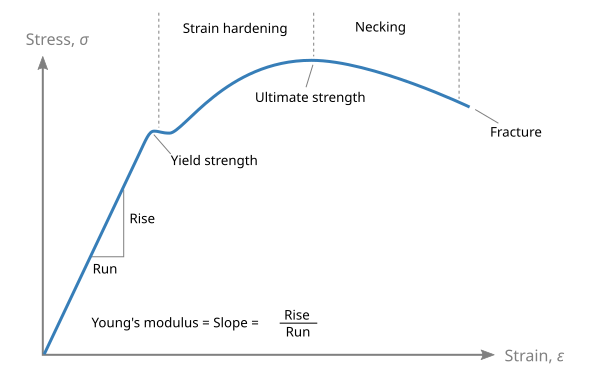OCR Specification focus:
‘Use E for e.m.f.; do not confuse with symbols for energy, electric field, or Young modulus.’
Understanding Symbols and Notation Clarity in Circuit Physics
Electrical physics relies heavily on clear and consistent notation to ensure accurate communication of ideas and data. Students and professionals must use standardised symbols and symbols correctly to prevent misunderstanding between different contexts. In this section, you will learn how to distinguish between symbols that appear similar but represent different physical quantities, and understand how notation clarity supports precision in circuit analysis and written physics communication.
Importance of Consistent Symbol Use
Every letter or symbol in physics represents a specific quantity with its own definition and unit. When identical letters are used for unrelated quantities, confusion can arise in both calculations and interpretation of equations. This is particularly relevant in electrical topics where E, V, and Q can represent several different ideas depending on context.
Maintaining clarity in notation ensures that readers can follow reasoning steps and that equations carry unambiguous meaning throughout a problem or experiment.
Symbol Focus: The Use of E
The OCR specification highlights that students must use E exclusively for electromotive force (e.m.f.), not for other physical quantities such as energy, electric field strength, or Young modulus. The consistency of this notation is essential for avoiding conceptual and mathematical errors.
Electromotive Force (E): The energy supplied per unit charge by a source of electrical energy, such as a cell or generator, to drive charge around a circuit.
When referring to the energy supplied by the source, the correct term is e.m.f. (E), while energy itself should be denoted by another symbol, commonly W. It is vital to distinguish E (e.m.f.) from E (energy), as they relate to different physical ideas and appear in different equations.
Differentiating Between Common Uses of “E”
To ensure notation clarity, the following distinctions must be memorised and practised when writing equations or interpreting text:
E (e.m.f.) – Represents electromotive force, measured in volts (V).
E (energy) – Represents energy, measured in joules (J).
E (electric field strength) – Represents force per unit charge, measured in newtons per coulomb (N C⁻¹) or volts per metre (V m⁻¹).
E (Young modulus) – Represents stress divided by strain, measured in pascals (Pa).
Each of these represents a distinct quantity. For clarity, use E for only one meaning within any given context, as indicated by the OCR specification. When both e.m.f. and electric field strength appear in the same discussion, label one differently (for example, use Eₑₘf or write “electric field strength” in full) to avoid confusion.
The Context of E.m.f. in Circuits
In electrical circuits, e.m.f. (E) is associated with energy supplied by a source such as a cell, battery, or power supply. It differs from potential difference (V), which measures energy transferred by a component such as a resistor or lamp.

Cell (single source) and battery (multiple cells) symbols used in circuit diagrams. These symbols denote the source of e.m.f. (E) in a circuit. The image shows the conventional long–short line pairs used for cells/batteries. Source.
EQUATION
—-----------------------------------------------------------------
Electromotive Force (E) = Energy Supplied (W) ÷ Charge (Q)
E = W / Q
E = Electromotive force (volt, V)
W = Energy supplied (joule, J)
Q = Charge moved (coulomb, C)
—-----------------------------------------------------------------
This equation shows that 1 volt of e.m.f. corresponds to 1 joule of energy supplied per coulomb of charge by the power source. The clear use of E for e.m.f. ensures that energy transfer in the circuit can be described unambiguously.
Potential Confusions and How to Avoid Them
Students often mistakenly use E interchangeably for different physical concepts, particularly between e.m.f., energy, and electric field strength. To maintain clarity:
Always check the units. The unit of volts implies e.m.f. or potential difference, not energy.
When describing energy, prefer the symbol W or U, depending on context (e.g., U for potential energy).
For electric field strength, ensure E is accompanied by the unit N C⁻¹ or V m⁻¹.

Field-line diagrams for a single positive charge and for a dipole. They visualise electric field strength (often denoted E) via arrow direction and line density, which differs conceptually from E used for e.m.f. Extra detail: the figure also introduces dipole fields, which are beyond this subsubtopic but help illustrate notation context. Source.
For Young modulus, always state it in the context of materials and mechanical properties, with the unit Pa.

Engineering stress–strain curve for a ductile material with a linear elastic region where the slope corresponds to Young’s modulus (E). This E is unrelated to e.m.f. and uses pascals (Pa). Extra detail: the figure may also indicate yield and plastic regions, which are not required here. Source.
Clear labelling, especially in written answers and diagrams, prevents ambiguity in multi-step reasoning or experimental interpretation.
Related Symbols and Their Proper Context
Physics often reuses letters for unrelated quantities, so careful attention to context is essential. Common examples include:
V for potential difference (voltage), but also for volume in mechanics or fluids.
I for electric current, but also for moment of inertia in rotational dynamics.
R for electrical resistance, but also for radius in geometrical or circular motion contexts.
When working in the field of electricity and magnetism, default meanings are usually assumed unless stated otherwise. However, when combining topics or solving cross-disciplinary problems, define each symbol at its first appearance.
Strategies for Maintaining Clarity in Notes and Exams
Good notation habits make a significant difference in exam performance and scientific accuracy.
Follow these best practices:
Define symbols clearly at the start of derivations or explanations.
Use subscripts (for example, Eₘf, E_field, E_y) to differentiate similar-looking variables when unavoidable.
Include units beside quantities to reinforce meaning.
Label graphs and diagrams with consistent symbols.
Avoid shorthand unless previously defined within your own notes.
These habits reflect professional scientific communication, ensuring your work can be universally understood and verified.
The Role of Clarity in Experimental Work
In practical physics, notation clarity extends to data tables, graphs, and reports. When plotting or tabulating data:
Use E (V) for electromotive force values.
Label axes with both quantity and unit (e.g., E/V).
Avoid abbreviations like “energy” for E, which could be misconstrued.
Cross-check symbol consistency between apparatus diagrams, equations, and result tables.
Maintaining these standards supports reliability and reproducibility in your experimental results.
Final Emphasis
The OCR specification’s requirement to “Use E for e.m.f.; do not confuse with symbols for energy, electric field, or Young modulus” encapsulates the principle of notation discipline that underpins all scientific communication. Mastering these distinctions allows accurate interpretation of circuit equations and builds the foundation for advanced study in both theoretical and applied physics.
FAQ
Because “E” is used for multiple, unrelated quantities across physics — electromotive force, electric field strength, energy, and Young modulus. Misusing it can completely change the meaning of an equation or graph label.
In electrical topics, “E” almost always means e.m.f., but when studying materials or fields, it shifts meaning. The specification highlights this to ensure clarity during problem-solving and practical reporting, where correct symbol use is vital for communication and marking accuracy.
Look at units and surrounding text.
If the unit is volt (V) and the discussion involves circuits or sources, it refers to e.m.f.
If the unit is N C⁻¹ or V m⁻¹, and the discussion involves charges or forces, it refers to electric field strength.
Diagrams also help — circuit diagrams imply e.m.f., while force or field diagrams suggest field strength.
Checking the physical context and units always clarifies the intended meaning.
Using incorrect notation can lead to loss of marks in written responses and errors in calculations.
In equations, it may make your expression dimensionally inconsistent.
In data tables or graphs, it causes confusion about what is being measured or plotted.
Examiners look for correct symbols as part of communication and understanding, not just numerical accuracy.
To avoid this, define symbols clearly when writing and keep consistent units throughout your work.
Both e.m.f. and potential difference measure energy transfer per unit charge — one supplies energy, the other transfers it.
E.m.f. describes energy supplied by a source, like a battery.
Potential difference (V) describes energy used or dissipated in a component, such as a resistor.
Since both involve joules per coulomb, they share the same unit — the volt. The distinction lies in direction of energy transfer, not the size or type of quantity.
Use subscripts or full labels to prevent ambiguity.
Examples:
E_emf (V) for electromotive force
E_field (N C⁻¹) for electric field strength
E_y (Pa) for Young modulus
Alternatively, write the full quantity name (e.g. Electromotive Force (V)) on graph axes or in table headings. This ensures clarity in mixed-topic experiments and aligns with OCR’s emphasis on correct, unambiguous notation.
Practice Questions
Question 1 (2 marks)
In an experiment investigating the electromotive force (e.m.f.) of a cell, a student labels the quantity “E” in their notes as “energy”.
(a) Explain why this is incorrect and state what “E” correctly represents in this context.
Mark Scheme:
1 mark: States that “E” should represent electromotive force (e.m.f.), not energy.
1 mark: Explains that e.m.f. is the energy supplied per unit charge by a source (or equivalent correct description).
Question 2 (5 marks)
A student confuses several uses of the symbol “E” in different parts of their physics course.
(a) Identify four distinct physical quantities that can use the symbol “E” and, for each, state the corresponding unit. (4 marks)
(b) Explain why it is important to use consistent notation when recording and analysing experimental data. (1 mark)
Mark Scheme:
(a) 1 mark each for up to four correct identifications and units:
Electromotive force (e.m.f.) — volt (V)
Energy — joule (J)
Electric field strength — newton per coulomb (N C⁻¹) or volt per metre (V m⁻¹)
Young modulus — pascal (Pa)
(b) 1 mark: Explains that consistent notation avoids confusion between different quantities and ensures that data, equations, and results are interpreted correctly and unambiguously.

